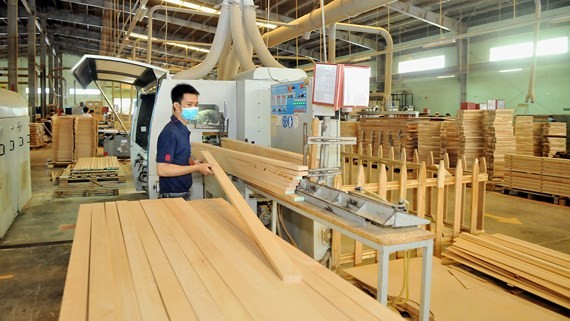
Exports of forestry items in first five months reached $3.4 billion, a year-on-year increase of 8.7 percent. This year, the sector strived to improve export revenue to $9 billion including wood and wooden products projected at $8.6 billion and other forestry products.
Deputy Head of the Vietnam Timber and Forest Products Association (Vifores) Nguyen Ton Quyen said that so far, wood processing firms have received full order.
The total export turnover of wood products reached $8 billion in 2017, 53 percent of which will come from local wood firms and 47 percent from foreign direct investment companies.
This is the third time domestic firms exceed their foreign peers. With the leading position in Southeast Asia, the fifth in the globe, Vietnam's wood processing industry is particularly known for production and exports of high-end wood products, particularly furniture.
Vietnam is one of the world's largest exporting countries of wooden furniture and parts.
Annual trade promotion is made through international fairs such as Vifa-Expo and Vifa Home in the country for years not only helping firms not pay for fairs in foreign countries but also attract 4,000 foreign visitors yearly contributing to push up tourism sector.
In 2017, wood firms paid $1.5 billion or 48 percent to buy wood material from other countries and use 52 percent of local wood worth $1.03 billion excluding shavings and plywood’s revenue of $1.5 billion.
The sector’s increased demand of wood encourages people to grow trees to satisfy the legitimate source of wood as well as intermediate processing industry; subsequently, the rate of forest coverage increased from 39.7 percent in 2011 to 41.45 percent in 2017.
Accordingly, the rate of local-grown wood also surged from 36 percent in 2005 to 52 percent in 2017 and expected to 55 percent in 2020. Thanks to abundant domestic wood material, Vietnamese firms have more advantages in the competition because of cheaper price.
Vietnamese firms have made indoor wooden furniture and do outwork of outdoor items; thankfully, the sector can achieved $8 billion in 2017 though it just join the global market just for a few years.
The sector’s problem is that its added value is still low. Though Vietnamese firms have done outwork for international brand names with bulk orders, they receive little profit. Turnover is stable thanks to bulk order but consumers keep asking lower prices; consequently, firms struggled with price problem.
In reality, Italian deluxe wooden products are first option and Vietnamese items is the second options in the market. It proved that Vietnamese products are selected for its high quality; therefore, firms should invest more to better this segment which generate higher profit compared to do outwork. It’s time for Vietnamese wooden processors should have its own brand names, brand name expert Doan Dinh Hoang said.
























